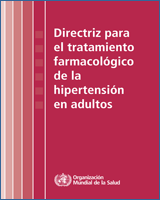Ventas, derechos y licencias. Para comprar publicaciones de la OMS, véase http://apps.who.int/bookorders. Para presentar solicitudes de uso comercial y consultas sobre derechos y licencias, véase https://www.who.int/es/copyright.
Materiales de terceros. Si se desea reutilizar material contenido en esta obra que sea propiedad de terceros, por ejemplo cuadros, figuras o imágenes, corresponde al usuario determinar si se necesita autorización para tal reutilización y obtener la autorización del titular del derecho de autor. Recae exclusivamente sobre el usuario el riesgo de que se deriven reclamaciones de la infracción de los derechos de uso de un elemento que sea propiedad de terceros.
Algunos derechos reservados. Esta obra está disponible en virtud de la licencia 3.0 OIG Reconocimiento-NoComercial-CompartirIgual de Creative Commons (CC BY-NC-SA 3.0 IGO; https://creativecommons.org/licenses/by-nc-sa/3.0/igo).
Con arreglo a las condiciones de la licencia, se permite copiar, redistribuir y adaptar la obra para fines no comerciales, siempre que se cite correctamente, como se indica a continuación. En ningún uso que se haga de esta obra debe darse a entender que la OMS refrenda una organización, productos o servicios específicos. No está permitido utilizar el logotipo de la OMS. En caso de adaptación, debe concederse a la obra resultante la misma licencia o una licencia equivalente de Creative Commons. Si la obra se traduce, debe añadirse la siguiente nota de descargo junto con la forma de cita propuesta: «La presente traducción no es obra de la Organización Mundial de la Salud (OMS). La OMS no se hace responsable del contenido ni de la exactitud de la traducción. La edición original en inglés será el texto auténtico y vinculante».
Toda mediación relativa a las controversias que se deriven con respecto a la licencia se llevará a cabo de conformidad con el Reglamento de Mediación de la Organización Mundial de la Propiedad Intelectual (https://www.wipo.int/amc/es/mediation/rules).

